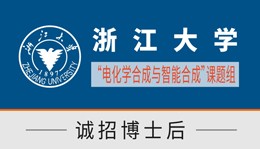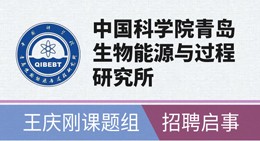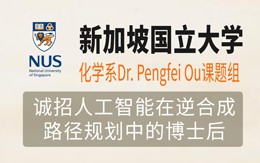当前位置:
X-MOL 学术
›
Environ. Sci. Technol.
›
论文详情
Our official English website, www.x-mol.net, welcomes your
feedback! (Note: you will need to create a separate account there.)
Dechlorination Helps Defluorination: Insights into the Defluorination Mechanism of Florfenicol by S-nZVI and DFT Calculations on the Reaction Pathways
Environmental Science & Technology ( IF 10.8 ) Pub Date : 2024-01-23 , DOI: 10.1021/acs.est.3c07435
Zhenhuan Chen 1, 2 , Jingdan Chen 2, 3 , Shendong Tan 2 , Zilin Yang 2 , Yanyan Zhang 2, 4, 5
Environmental Science & Technology ( IF 10.8 ) Pub Date : 2024-01-23 , DOI: 10.1021/acs.est.3c07435
Zhenhuan Chen 1, 2 , Jingdan Chen 2, 3 , Shendong Tan 2 , Zilin Yang 2 , Yanyan Zhang 2, 4, 5
Affiliation

|
Defluorination is essential to eliminate the antibiotic resistance and detrimental effects of florfenicol (C12H14Cl2FNO4S, FF), which is achievable by sulfidated nanoscale zerovalent iron (S-nZVI), yet a comprehensive understanding of the mechanism is lacking. Herein, we used experimental data and density functional theory calculations to demonstrate four dechlorination-promoted defluorination pathways of FF, depending on S-nZVI or not. FF was defluorinated in a rapid and then slow but continuous manner, accompanying a consecutive dechlorination to deschloro (dFF) and dideschloro FF (ddFF). Unexpectedly, the predominant defluorination occurs by spontaneous hydrolysis of ddFF to form the hydrolyzed byproduct (HO-ddFF), i.e., independent of S-nZVI, which is initiated by intramolecular attack from carbonyl O to alkyl F and is thus limited for FF and dFF owing to the diminished nucleophilicity by electron-withdrawing Cl. The removal of Cl also makes the reductive defluorination of ddFF by S-nZVI amenable. The other two minor but more rapid defluorination pathways occur in synergy with the dechlorination of FF and dFF, which are mediated by the reactive carbanion intermediates and generate HO-dFF and HO-ddFF, respectively. The reliability of these dechlorination-facilitated defluorination pathways was verified by the consistency of theoretical calculations with experimental data, providing valuable insights into the degradation of fluorinated contaminants.
中文翻译:

脱氯有助于脱氟:通过S-nZVI和反应路径的DFT计算深入了解氟苯尼考的脱氟机理
脱氟对于消除氟苯尼考(C 12 H 14 Cl 2 FNO 4 S,FF)的抗生素耐药性和有害影响至关重要,这可以通过硫化纳米级零价铁(S-nZVI)实现,但缺乏对其机制的全面了解。在此,我们使用实验数据和密度泛函理论计算来证明 FF 的四种脱氯促进脱氟途径,这取决于 S-nZVI 与否。 FF 以快速然后缓慢但连续的方式脱氟,同时连续脱氯为脱氯 (dFF) 和二脱氯 FF (ddFF)。出乎意料的是,主要的脱氟是通过 ddFF 自发水解形成水解副产物 (HO-ddFF) 发生的,即独立于 S-nZVI,它是由羰基 O 到烷基 F 的分子内攻击引发的,因此仅限于 FF 和 dFF由于吸电子Cl 的亲核性减弱。 Cl 的去除也使得 S-nZVI 可以对 ddFF 进行还原脱氟。另外两个次要但更快速的脱氟途径与 FF 和 dFF 的脱氯协同发生,它们由活性碳负离子中间体介导,并分别生成 HO-dFF 和 HO-ddFF。这些脱氯促进脱氟途径的可靠性通过理论计算与实验数据的一致性得到验证,为氟化污染物的降解提供了有价值的见解。
更新日期:2024-01-23
中文翻译:

脱氯有助于脱氟:通过S-nZVI和反应路径的DFT计算深入了解氟苯尼考的脱氟机理
脱氟对于消除氟苯尼考(C 12 H 14 Cl 2 FNO 4 S,FF)的抗生素耐药性和有害影响至关重要,这可以通过硫化纳米级零价铁(S-nZVI)实现,但缺乏对其机制的全面了解。在此,我们使用实验数据和密度泛函理论计算来证明 FF 的四种脱氯促进脱氟途径,这取决于 S-nZVI 与否。 FF 以快速然后缓慢但连续的方式脱氟,同时连续脱氯为脱氯 (dFF) 和二脱氯 FF (ddFF)。出乎意料的是,主要的脱氟是通过 ddFF 自发水解形成水解副产物 (HO-ddFF) 发生的,即独立于 S-nZVI,它是由羰基 O 到烷基 F 的分子内攻击引发的,因此仅限于 FF 和 dFF由于吸电子Cl 的亲核性减弱。 Cl 的去除也使得 S-nZVI 可以对 ddFF 进行还原脱氟。另外两个次要但更快速的脱氟途径与 FF 和 dFF 的脱氯协同发生,它们由活性碳负离子中间体介导,并分别生成 HO-dFF 和 HO-ddFF。这些脱氯促进脱氟途径的可靠性通过理论计算与实验数据的一致性得到验证,为氟化污染物的降解提供了有价值的见解。































 京公网安备 11010802027423号
京公网安备 11010802027423号